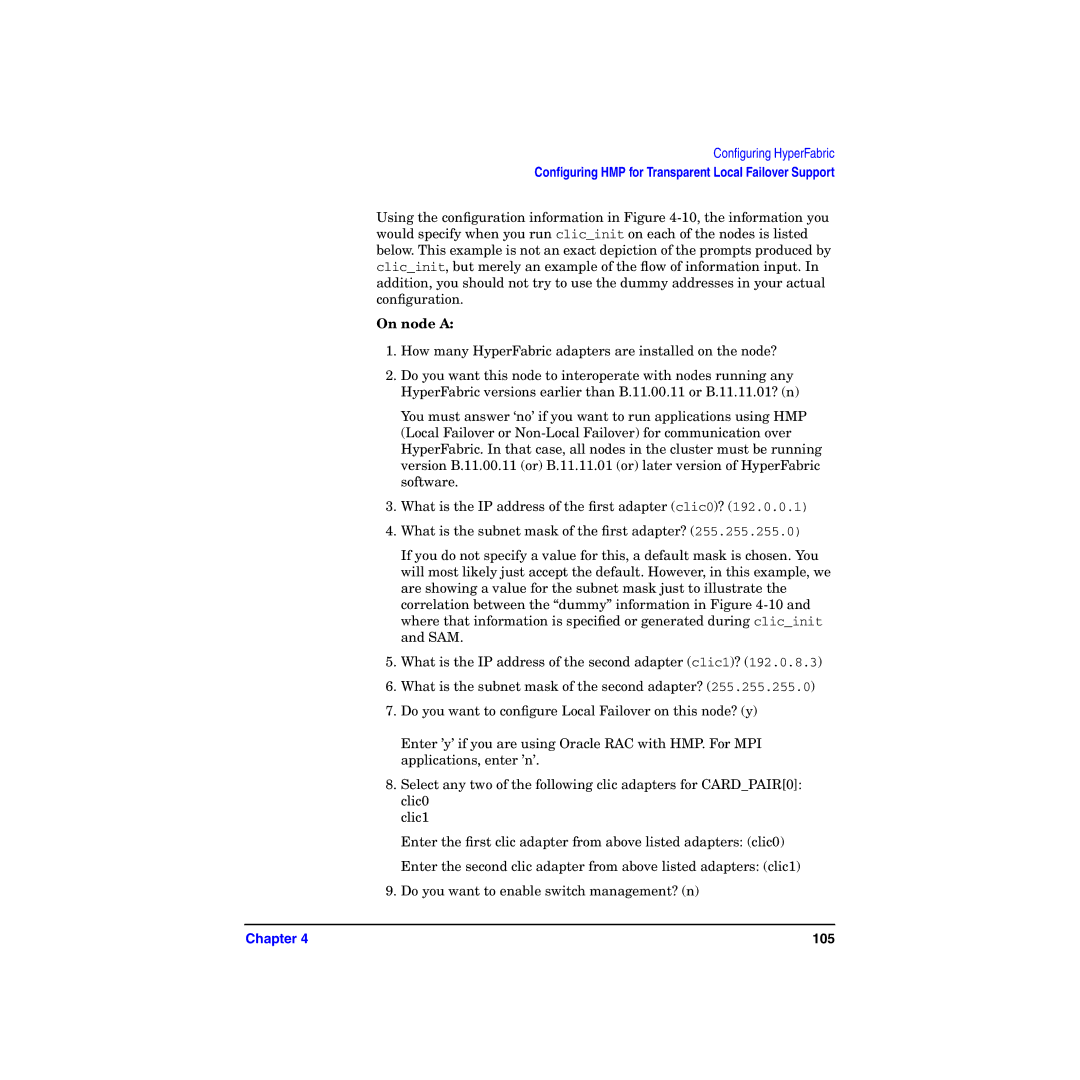Configuring HyperFabric
Configuring HMP for Transparent Local Failover Support
Using the configuration information in Figure
On node A:
1.How many HyperFabric adapters are installed on the node?
2.Do you want this node to interoperate with nodes running any HyperFabric versions earlier than B.11.00.11 or B.11.11.01? (n)
You must answer ‘no’ if you want to run applications using HMP (Local Failover or
3.What is the IP address of the first adapter (clic0)? (192.0.0.1)
4.What is the subnet mask of the first adapter? (255.255.255.0)
If you do not specify a value for this, a default mask is chosen. You will most likely just accept the default. However, in this example, we are showing a value for the subnet mask just to illustrate the correlation between the “dummy” information in Figure
5.What is the IP address of the second adapter (clic1)? (192.0.8.3)
6.What is the subnet mask of the second adapter? (255.255.255.0)
7.Do you want to configure Local Failover on this node? (y)
Enter ’y’ if you are using Oracle RAC with HMP. For MPI applications, enter ’n’.
8.Select any two of the following clic adapters for CARD_PAIR[0]: clic0
clic1
Enter the first clic adapter from above listed adapters: (clic0)
Enter the second clic adapter from above listed adapters: (clic1)
9.Do you want to enable switch management? (n)
Chapter 4 | 105 |
